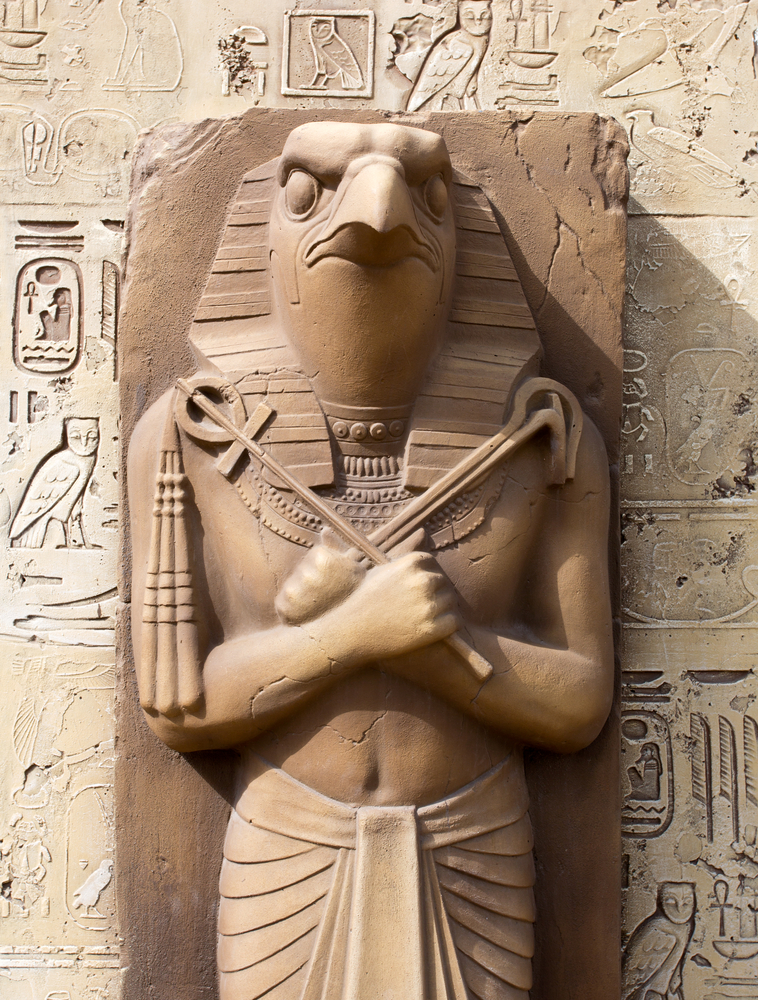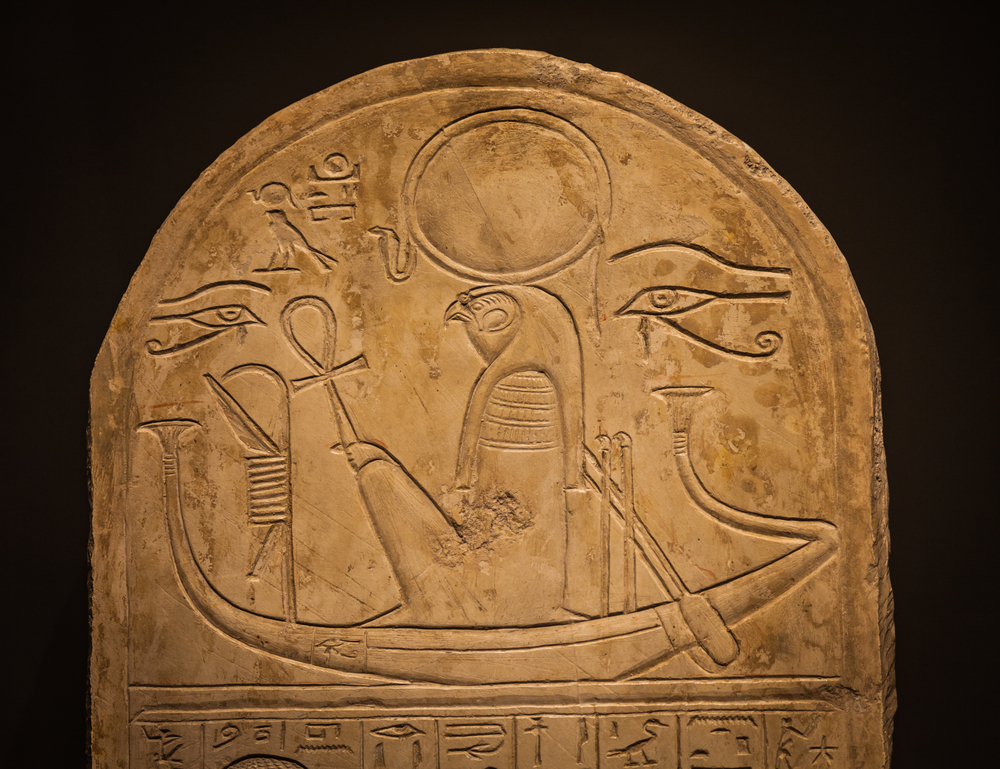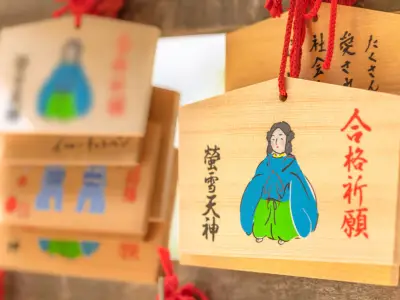Have you ever wondered about the ancient Egyptian god Ra and the fascinating myths surrounding him? Ra, the sun god, played a central role in ancient Egyptian beliefs and daily life. This blog post delves into Ra's myths, symbols, and powers, offering an overview of one of Egypt's most significant deities.
Jump to:
Who is Ra?

Ra is one of the most important gods in ancient Egyptian mythology. Often depicted with the head of a falcon crowned with a sun disk, Ra is the god of the sun, creation, and kingship. As the central figure in Egyptian religion, Ra's influence extended across all aspects of life, embodying the power of the sun and the creator of life itself.
The Story of Ra
The myth of Ra begins with the creation of the world. According to ancient Egyptian beliefs, Ra emerged from the primordial waters of chaos, called Nun. He created himself and then gave birth to the first gods, Shu (air) and Tefnut (moisture). These deities went on to produce Geb (earth) and Nut (sky), completing the creation of the world as the Egyptians knew it.
Ra was believed to travel across the sky in his solar boat during the day, bringing light to the world. At night, he journeyed through the underworld, fighting off evil forces to ensure the sun would rise again. This daily cycle symbolised the eternal struggle between order and chaos.
Recommended for you!
Best SellersSymbols of Ra
Ra is often associated with several symbols that highlight his power and significance:
- Sun Disk: Representing his role as the sun god.
- Falcon: Symbolising his sky dominion and kingship.
- Solar Boat: Depicting his journey across the sky and through the underworld.
- Uraeus (Cobra): Emblematic of protection and sovereignty.
These symbols were widely used in Egyptian art and iconography, underscoring Ra's omnipresence and divine authority.
Ra's Powers and Roles

Ra's powers were vast, reflecting his status as a supreme deity. Here are some key aspects of his influence:
- Creation: Ra was considered the creator god, responsible for bringing the universe into existence.
- Sunlight: As the god of the sun, he provided light and warmth, essential for life and agriculture.
- Kingship: Ra was the divine authority behind the pharaohs, who were seen as his earthly representatives.
- Protection: By journeying through the underworld each night, Ra protected the world from chaos and ensured the continuation of life.
Myths Involving Ra
Several captivating myths involve Ra and highlight his significance in Egyptian mythology:
The Eye of Ra
Sometimes depicted as a separate entity, the Eye of Ra is a powerful symbol associated with the god. It represents both his protective power and his capacity for destruction. The Eye was believed to watch over the world, warding off evil and ensuring safety. In some myths, the Eye of Ra is personified as a goddess, such as Hathor or Sekhmet, who could act on Ra's behalf. The Eye of Ra could take the form of a lioness or a cobra to defend Ra from his enemies and maintain cosmic order.
Ra's Nightly Journey
Every night, Ra battles the serpent Apophis, the embodiment of chaos. This struggle ensures the sun rises each day, symbolising the triumph of order over disorder. Ra's nightly journey through the underworld is fraught with danger, as he must navigate the dark and treacherous realm while protecting the world from Apophis's evil forces. This myth highlights Ra's role as a protector and maintainer of balance in the universe.
The Creation of Humans
One of the most fascinating myths involving Ra is the story of how he created humans. According to this myth, Ra wept tears of joy after creating the world, and from these tears, humans were born. This act of creation emphasises Ra's caring nature and his deep connection to humanity. It also highlights the belief that humans are a direct result of divine compassion and creativity.
Ra and the Distant Goddess
Another intriguing myth is the story of Ra and the Distant Goddess. In this tale, Ra sends the Eye of Ra, personified as the goddess Hathor, to punish humanity for their sins. Hathor becomes the fierce lioness Sekhmet and wreaks havoc upon the earth.
To stop the destruction, Ra tricks Sekhmet by dyeing beer red to resemble blood, which she drinks and becomes intoxicated. This causes her to revert to the gentle Hathor, ending the devastation. This myth illustrates Ra's power to both destroy and restore order, highlighting the dual nature of his protective and punitive aspects.
Ra's Relationships and Family Tree
Understanding Ra's relationships and family tree provides insight into the interconnected nature of Egyptian mythology. Here are the key figures related to Ra and their roles in his mythos:
- Shu (god of air): Son of Ra, twin brother and husband of Tefnut.
- Tefnut (goddess of moisture): Daughter of Ra, twin sister and wife of Shu.
- Geb (god of the earth): Grandson of Ra, son of Shu and Tefnut, brother and husband of Nut.
- Nut (goddess of the sky): Granddaughter of Ra, daughter of Shu and Tefnut, sister and wife of Geb.
- Osiris (god of the afterlife): Great-grandson of Ra, son of Geb and Nut, brother and husband of Isis.
- Isis (goddess of magic and motherhood): Great-granddaughter of Ra, daughter of Geb and Nut, sister and wife of Osiris.
- Seth (god of chaos): Great-grandson of Ra, son of Geb and Nut, brother and husband of Nephthys.
- Nephthys (goddess of funerary rites): Great-granddaughter of Ra, daughter of Geb and Nut, sister and wife of Seth.
- Horus (god of the sky): Great-great-grandson of Ra, son of Osiris and Isis, sometimes conflated with Ra as a solar deity.
- Amun-Ra: A fusion of Amun (a hidden god) and Ra, combining their attributes and increasing their influence in Egyptian religion.
- Hathor (goddess of love and joy): Often associated with Ra as his daughter or consort, sometimes considered an aspect of the Eye of Ra.
- Sekhmet (goddess of war): Sometimes considered an aspect of the Eye of Ra, known for her fierce protection and destructive power on Ra's behalf.
- Bastet (goddess of home and fertility): Sometimes linked with the Eye of Ra, known for her nurturing and protective qualities.
Ra and Other Deities
Ra's mythology often intersects with other gods and goddesses in fascinating ways. For example, Ra merged with Amun, another powerful deity, to become Amun-Ra, combining their attributes and increasing their influence. This syncretism demonstrates the dynamic and evolving nature of Egyptian religion.
Another intriguing relationship is between Ra and Isis. In one myth, Isis tricks Ra into revealing his secret name, gaining immense power and demonstrating the complex interplay between the gods.
Ra's Worship and Legacy

Ra's worship was a big part of ancient Egyptian religion, reflecting his importance as the sun god and creator. There were many temples dedicated to Ra, with Heliopolis being the most significant centre of his worship. Here, priests conducted daily rituals to honour Ra and ensure the continued balance of the cosmos.
The pharaohs, considered Ra's earthly representatives, often built grand monuments and temples to commemorate their divine connection to him. Festivals celebrating Ra's journey across the sky were held regularly, involving elaborate processions, offerings, and hymns.
Ra's legacy extends far beyond the temples and rituals of ancient Egypt. His influence permeated all aspects of Egyptian life, from the agricultural cycles to the daily routines of the people. The imagery and symbols associated with Ra, such as the sun disk and the falcon, have endured through millennia, influencing art, culture, and religion even beyond Egypt's borders.
Ra's depiction in art and literature highlights his powerful impact on the ancient world. He embodied the principles of creation, protection, and kingship. His myths continue to captivate modern audiences, providing a window into the rich and complex spirituality of ancient Egypt.
Recommended for you!
Best SellersFrequently Asked Questions About Ra
What is Ra's real name?
Ra's real name is not specified in Egyptian mythology. He is simply known as Ra, which means "sun" in ancient Egyptian.
Why does Ra have a snake on his head?
The snake, often a cobra, is known as the Uraeus and symbolises royalty and divine authority. It also represents protection, as it was believed to ward off enemies and evil spirits.
Was Ra an evil god?
Ra was not considered an evil god. He was a powerful and benevolent deity who provided light, life, and protection to the world. However, his power could be destructive when necessary to maintain order.
Is the Eye of Ra evil?
The Eye of Ra is not inherently evil. It is a symbol of Ra's power and protection, though it can be a destructive force against his enemies.
What was the curse of Ra?
There is no specific "curse of Ra" in Egyptian mythology. However, Ra's power and wrath could be invoked against those who defied or disrespected him.
Did Ra have a wife
Ra did not have a wife in the traditional sense. However, he was associated with several goddesses, such as Hathor and Sekhmet, who acted on his behalf.
Why did Isis trick Ra?
Isis tricked Ra to learn his secret name and gain his power. She did this by creating a magical snake that bit Ra, and she offered to heal him only if he revealed his true name.
Who is Anubis to Ra?
In the pantheon of Egyptian gods, Anubis is not directly related to Ra. Anubis is the god of mummification and the afterlife, while Ra is the sun god. They operate in different realms within mythology.
Are Horus and Ra the same?
Horus and Ra are not the same, though they share similarities. Horus is often depicted as a sky god with a falcon head, while Ra is the sun god. Horus is sometimes considered the son of Ra, and they are closely associated in various myths.
Is Ra a demigod?
Ra is not a demigod. In Egyptian mythology, he’s considered a supreme deity with powers far beyond those of demigods.
Are Aten and Ra the same god?
Aten and Ra are distinct but related deities. Aten represents the sun disk and was worshipped as a single god during the reign of Pharaoh Akhenaten. Ra, on the other hand, is the sun god with a broader range of attributes and powers.
What god did Ra fight?
Ra fought Apophis, the serpent of chaos, during his nightly journey through the underworld. This battle symbolised the struggle between order and chaos.
Is Ra the oldest god?
Ra is one of the oldest and most important gods in Egyptian mythology, but he is not necessarily the oldest. Other ancient deities like Atum and Nun also play important roles in the creation myths.
Why is Ra so serious?
Ra is serious because he embodies the principles of order, authority, and creation. His role as the sun god and protector of the world required him to maintain balance and ward off chaos.
Is The Eye of Ra a girl?
The Eye of Ra can be personified as a goddess, such as Hathor, Sekhmet, or Bastet. In this form, it acts as Ra's powerful agent, capable of both nurturing and destructive actions.
What does Ra mean spiritually?
Spiritually, Ra represents creation, life, and the sustaining power of the sun. He embodies the eternal cycle of birth, death, and rebirth, highlighting the interconnectedness of all life.
Why did Amun and Ra merge?
During the New Kingdom period, Amun and Ra merged to form Amun-Ra, combining Amun's hidden, mysterious aspects with Ra's visible, life-giving power. This merger strengthened their influence and unified their worship.
Study Egyptian Mythology for £29
If you’re fascinated by Ra and want to learn more about Egyptian mythology, consider enrolling in the Egyptian Mythology Diploma Course with Centre of Excellence. For a limited time, you can get the course at a discounted price of £29.













